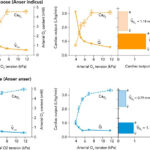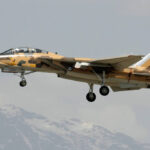For aviation enthusiasts, the allure of piloting unique aircraft, especially experimental or former military planes, is undeniable. However, the skies above are governed by regulations, and operating these specialized aircraft often requires more than just a standard pilot’s license. The Federal Aviation Administration (FAA) in the United States sets specific requirements to ensure safety and proficiency when it comes to flying certain types of aircraft. So, Do You Need A Special License To Fly these extraordinary machines? The answer is nuanced, but often, yes, you do need special FAA authorization.
What is FAA Authorization for Special Aircraft?
Many unique aircraft, particularly former military jets and certain experimental models, do not possess a standard Type Certificate – a document confirming that the design meets safety standards for commercial operations. Instead, they often operate under a Special Airworthiness Certificate, frequently in the Experimental Aircraft Exhibition category. This certificate comes with operating limitations, which are crucial guidelines issued by the FAA that pilots must adhere to. These limitations, as detailed in FAA document 8900.1 Volume 5, Chapter 9, Section 2, often stipulate the need for specific FAA pilot authorizations to operate these aircraft. Think of it not as a completely separate “license,” but as an additional endorsement or permission layered upon your existing pilot certifications, tailored to the specific demands of these aircraft.
Which Aircraft Require Special FAA Authorization?
The FAA mandates pilot authorizations for a range of experimental category aircraft, as outlined in document 8900.1. These categories include:
- Former Military Aircraft: Planes previously used by armed forces often fall into this category due to their unique characteristics and performance capabilities.
- Turbojet-Powered Aircraft: This broadly includes all aircraft powered by turbojet and turbofan engines, known for their high speeds and operational complexity.
- Rocket-Powered Aircraft: Aircraft utilizing rocket propulsion systems, representing highly specialized and potentially hazardous operations.
- Large Aircraft: Planes exceeding 12,500 pounds of maximum gross takeoff weight (MGTOW), categorized as “large” due to their size and operational considerations.
- Aircraft Requiring Specific Pilot Skills: The FAA may designate other aircraft models that necessitate specialized piloting skills and knowledge, even if they don’t fall strictly into the above categories. Examples provided by the FAA include iconic aircraft like the Northrop F-5, Bell P-63, MiG-15, Ju-52, Mi-24, and the BD-5J, illustrating the diversity of aircraft types that might require special authorization.
The FAA’s objective is to ensure a level of safety and pilot proficiency comparable to that of type-certificated aircraft, despite the absence of type ratings for these experimental categories.
Pilot Requirements for Former Military Turbojet and Turboshaft Aircraft
For pilots aspiring to command former military turbojet or turboshaft-powered aircraft, the FAA sets forth specific prerequisites to gain authorization. According to 8900.1, an applicant must meet the following criteria:
- Pilot Certificate: Hold at least a U.S. private pilot certificate with the appropriate category and class rating for the specific aircraft configuration.
- Instrument Rating: Possess an instrument rating, demonstrating competency in flying solely by reference to instruments, crucial for complex aircraft operations.
- Medical Certificate: Maintain at least a valid U.S. third-class medical certificate, or equivalent, ensuring the pilot meets basic health standards. The FAA also acknowledges U.S. Military Flight Medicals or U.S. driver’s licenses under the BasicMed process (with limitations on airspeed for BasicMed pilots).
- Flight Time and Qualification: Have logged a minimum of 500 hours of pilot flight time in the relevant aircraft category and completed a U.S. armed services qualification checkout. Alternatively, pilots with more extensive experience can qualify with a minimum of 1,000 hours of total pilot flight time, including 500 hours as pilot-in-command (PIC) in the aircraft category, along with completing specific training requirements.
- Supersonic Flight Experience (If Applicable): If the aircraft is capable of supersonic flight, the pilot must have a minimum of 250 hours of PIC flight time in fixed-wing turbojet-powered aircraft within specific Group V, VI, or VII aircraft classifications. Alternatively, proof of completion of a U.S. military qualification in a supersonic turbojet-powered aircraft is acceptable.
Pilot Requirements for Former Military Propeller-Driven Airplanes
The requirements also extend to certain former military propeller-driven airplanes. For those exceeding 12,500 pounds MGTOW, or with over 800 horsepower and a VNE (Velocity Never Exceeded) above 250 knots, pilots must meet these criteria:
- Pilot Certificate: Hold at least a U.S. private pilot certificate with the appropriate category and class rating.
- Medical Certificate: Possess at least a valid U.S. third-class medical certificate or equivalent (U.S. Military Flight Medical or U.S. driver’s license under BasicMed, with MGTOW limitations for BasicMed pilots).
- Flight Time: Have logged a minimum of 500 hours of pilot flight time.
- Training Completion: Successfully complete the specific training requirements outlined by the FAA for these aircraft.
The Challenge of Obtaining Required Training
A significant hurdle in obtaining FAA authorization can be fulfilling the training requirements. As the original article points out, finding individuals properly authorized to provide the necessary training on these unique aircraft can be challenging, adding complexity to the process.
Further Resources
For those seeking more detailed information, the FAA provides valuable resources on their Vintage & Experimental Aircraft Program web page. This website serves as a central hub for understanding regulations, requirements, and guidance related to operating these fascinating aircraft.
Conclusion
In conclusion, while a standard pilot’s license is the foundation, flying certain experimental and former military aircraft in the U.S. does indeed necessitate special FAA authorization. This isn’t necessarily a separate “special license,” but rather a set of specific endorsements, qualifications, and training requirements mandated by the FAA to ensure the safe operation of these unique and often high-performance aircraft. Understanding these requirements is the first step for any pilot aspiring to take to the skies in these extraordinary flying machines.

